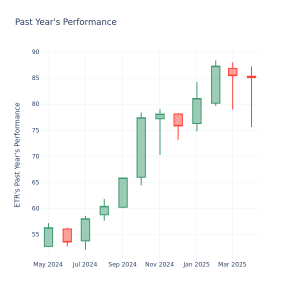You can build a portfolio one stock at a time, which is a great way to invest. Or you can save time and effort and use exchange-traded funds (ETFs) to quickly build a portfolio. A well-structured high-yield dividend ETF you should consider is the Schwab U.S. Dividend Equity ETF (NYSEMKT: SCHD). But there are some noticeable missing pieces in the ETF, which is why you might want to buy both it and high-yield stocks Realty Income (NYSE: O) and W.P. Carey (NYSE: WPC). Here’s a look at all three.
The Schwab U.S. Dividend Equity ETF is a passively managed exchange-traded fund (ETF) that uses a unique screening approach to build its portfolio. It starts by screening for companies that have increased their dividend for 10 or more consecutive years, eliminating real estate investment trusts (REITs) from consideration (more on this in a second). Then a composite score is created for all the remaining stocks. The score includes cash flow to total debt, return on equity, dividend yield, and five-year dividend growth rate. The 100 highest-rated stocks get into the ETF.
What is basically going on here is that the Schwab U.S. Dividend Equity ETF is trying to create a portfolio that balances company quality, company growth, and dividend yield. You get all this for a fairly tiny expense ratio of 0.06%. While the close to 3.5% dividend yield may not sound huge, it is nearly three times higher than what you’d get from an S&P 500 index (SNPINDEX: ^GSPC) tracking ETF.
The Schwab U.S. Dividend Equity ETF is a fairly compelling core holding for dividend investors. Since the portfolio gets updated annually, you can also rest assured that you’re always going to own the kind of stocks you expect. Yet there are some glaring holes in the ETF’s portfolio.
For example, since it focuses on companies with more rapid dividend growth, the utility sector isn’t well represented in the Schwab U.S. Dividend Equity ETF. Utilities, which are a common holding for income investors, make up less than 1% of the portfolio. But, more importantly, REITs, a sector known for offering high yields, are excluded. So you can easily cherry-pick high-yield utility and REIT stocks to complement this ETF. To fill in the most obvious blank spot, two solid REIT options are Realty Income and W.P. Carey, which yield 5% and 6%, respectively.
Both of these companies are large net lease REITs, which means that their tenants are responsible for most of the operating costs of the properties they occupy. Although any single property is high-risk, across a large portfolio, the risks are fairly low. Realty Income is the largest net lease REIT, followed by W.P. Carey. Portfolio size isn’t an issue for either of them.

